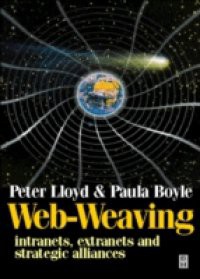This book arose from a conference organized under the auspices of the Australian Research Council's Complex Open Systems Research Network (which has become the most prominent for complex systems in the world — just Google “complex systems network”), the ANU Centre for Complex Systems, and the Asia-Pacific Center for Theoretical Physics. The book is unique in the scope of its coverage of applications of complex systems science: Extraterrestrial — astrophysical, solar and space plasmas; Earth System — climate, ecosystems; Human systems — brain dynamics, social networks, financial statistics, advanced technologies.It also presents up-to-date discussions of new theoretical approaches, in particular those based on entropy and entropy production maximization, a field still under development but with much promise for providing a much-needed unifying principle for complex systems science.The authors are at the forefront of their fields, and organized their chapters to effectively bring out common features of complex systems. A comprehensive and common lexicon of keywords has been used to unify indexing, thus making the book an invaluable introduction to anyone seeking an overview of complex systems science.Contents:Introduction to Complex and Econophysics Systems: A Navigation Map (T Aste & T Di Matteo)An Introduction to Fractional Diffusion (B I Henry et al.)Space Plasmas and Fusion Plasmas as Complex Systems (R O Dendy)Bayesian Data Analysis (M S Wheatland)Inverse Problems and Complexity in Earth System Science (I G Enting)Applied Fluid Chaos: Designing Advection with Periodically Reoriented Flows for Micro to Geophysical Mixing and Transport Enhancement (G Metcalfe)Approaches to Modelling the Dynamical Activity of Brain Function Based on the Electroencephalogram (D T J Liley & F Frascoli)Jaynes' Maximum Entropy Principle, Riemannian Metrics and Generalised Least Action Bound (R K Niven & B Andresen)Complexity, Post-Genomic Biology and Gene Expression Programs (R B H Williams & O J-H Luo)Tutorials on Agent-Based Modelling with NetLogo and Network Analysis with Pajek (M J Berryman & S D Angus)Readership: Physical scientists, climate change researchers, plasma and fluid dynamicists, biophysicists, environmental engineers and others interested in complex systems science.



















